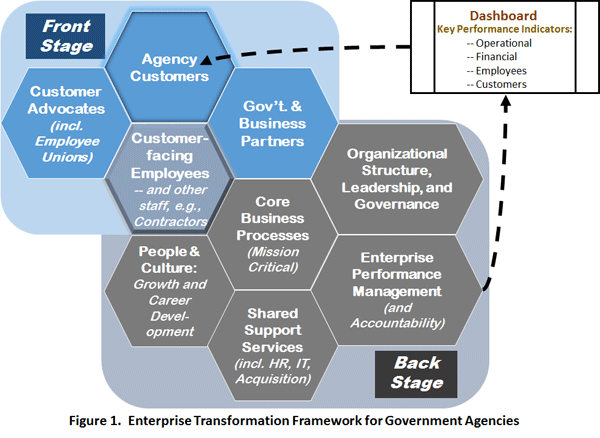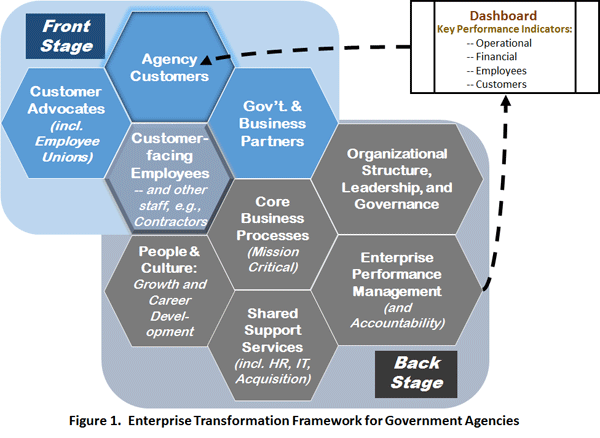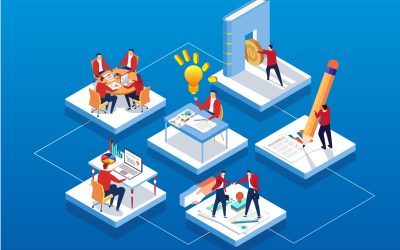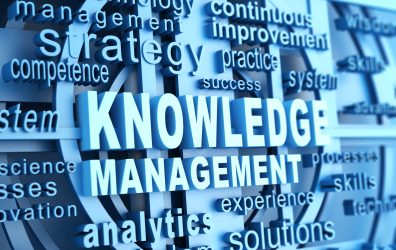“Culture does not change because we desire to change it. Culture changes when the organization is transformed; the culture reflects the realities of people working together every day.” Frances Hesselbein – President of the Frances Hesselbein Leadership Institute
Effective use of a transformation framework, such as the one illustrated in Figure 1, is a hallmark of successful organizations and an essential means to achieving operational and technology environments that maximize institutional mission performance and outcomes. Among other things, this includes realizing cost savings through consolidation and reuse of shared services and elimination of antiquated and redundant mission operations, enhancing information sharing through data standardization and system integration, and optimizing service delivery through streamlining and normalization of business processes and mission operations.

The Front Stage components of this framework are recipients of Government services or benefits (Agency Customers), Customer Advocates such as lobbyists or other interest groups and employee unions, Government and Business Partners (collaborating with an agency to help it better serve its customers), and Employees of the agency that directly interact with its customers. There’s never been a time when great customer service mattered more to users of government services than it does now. Millions of Americans depend on federal agencies for vital services, and delays in processing those requests often cause understandable frustration and hardship, and government customer service delivery breakdowns appear in the headlines all too frequently. It’s crucial for government agencies to ensure that their services are consistently delivered in a way that satisfies and even delights their customers. This can be accomplished in two ways. The first is through a positive customer focused culture that values, supports and nurtures customer relationships. The second is from the personal commitment and determination of the people that take care of customers every day. When customer-facing people choose to provide a level of care that is flawless in every interaction, they build “emotional bank accounts” with customers that keep them connected to the agency. While customer care is everyone’s business and should be part of everyone’s job description, customer facing people have the primary responsibility to represent the agency well, in the eyes of the customer. It is also important that customer-facing employees never fail to avail themselves of the many complementary services that can be provided by “partners in the cause of superior customer service” – such as customer advocacy groups and other government agencies providing services to the same public consumers of government services.
Back Stage components of this Enterprise Transformation Framework encompass organizational functions that, though not customer-facing, are nonetheless vital to mission success – in that the agency’s customers are not likely to be very satisfied if they are not well executed (i.e., in an orchestrated manner virtually all the time). As a government organization undertakes significant transformation, these enabling processes, services, and technologies must be kept tightly integrated and fully aligned with one another for the full duration of the journey, to avoid disruptions or degradations in the operational capabilities that must be continuously delivered to support Front Stage success. In government agencies, that necessary, nonstop integration and alignment effort is not easily sustained as transformational activities progress (or, sometimes, regress), without effective management of all the many, inter-related supporting activities. The Enterprise Transformation Framework for Government Agencies serves to, among other things, keep all those interdependent needs in focus.
People and Culture (Growth and Career Development) – Faced with tightening budgets, some agencies may be tempted to shift their focus away from training and career-development activities. Yet, doing so would be a big mistake, especially during a period of large-scale organizational transformation – when opportunities for personal development and growth are among the most important factors influencing employees’ engagement and commitment to the cause. Today, employees recognize that their prospects for continued employment, career development, and advancement are dependent on confidence that their agency is well managed and headed in the right direction. Indeed, they always have the option to transfer to another organization. To gain and sustain their trust and confidence, however, leaders need to help employees understand that there is a coherent strategy in place for succeeding in the emerging operational environment and that the agency is making progress relative to key objectives. It is important that organizations instill the confidence that outcomes are balanced with contributions in an equitable manner. An important part of building employee confidence in a development approach is clarifying what employees can expect from the agency. Working with others across organizational lines can help employees identify opportunities for advancement that may lie outside of their current divisions or departments. And, by providing greater exposure and visibility in the organization, strong cross-functional working relationships can help employees develop networks of support that can be leveraged in seeking promotions to more senior levels. Through coaching and regular performance feedback, supervisors can help employees identify developmental needs while enhancing their skills. Supervisors also often serve as mentors for employees, helping them understand organizational expectations and develop supportive networks. Most organizations would also benefit from better communication regarding development opportunities. Promoting high levels of employee engagement is particularly important today. In the rapidly changing environment of a major transformation, where roles and responsibilities are continually evolving, organizations must count on employees to act on their own in ways consistent with organizational cultures, objectives, and values. By managing a broader set of issues that impact employees’ views of their development opportunities, leaders can keep key contributors focused on moving ahead, instead of moving on.
Core Business Processes (Mission-Critical) – Government agencies are learning that consistent customer service is the key to meeting customer expectations. Understanding core business processes, by clearly defining and prioritizing them, is an essential first step toward improving customer satisfaction. In a real transformative environment, organizations need to readily respond to change – especially as customer expectations increase. Customers are more mobile today, and so expect a certain level of quality of service regardless of where and how they prefer to engage with government. Customers also expect agencies to respond with a certain amount of personalization. It is very difficult to meet these great expectations in a timely manner when core business processes and data are widely dispersed and inconsistent, as they are in many government agencies. In the 21st century, government organizations need to add another core business process to the one(s) they’ve always considered mission-essential – and that is Customer Relationship Management (CRM), which needs to be treated as a strategy for optimizing government’s interactions with the consumers of its products, benefits, and services. Leveraging technology quite heavily, CRM allows for the establishment of much stronger relationships with former, current and prospective customers, while continuously improving an agency’s customer service capabilities. CRM enables an organization to actively manage customer relations in a deliberate and strategic manner. In practice, that means developing methodologies, internal operations, software and Internet capabilities to better address your customers’ needs and, as a result, make your relationships with your customers more satisfying. Using such a system, you can keep track of key customer information such as contacts, communications, accounts, interests, and preferences – making it possible to match your customers’ needs with your agency’s benefits and services. By analyzing the tracked data, your organization can always “know” your customers, enhance the ways you communicate with them, reduce response times, and better serve more geographic regions, while constantly integrating more support information, people, policies, processes and technological capabilities.
Shared Support Services (Including HR, IT, and Acquisition) – Most organizations in the private sector are clear about the benefits of implementing shared support services, such as Human Resources (HR) management, Information Technology (IT), Acquisition and Supply Chain Management (SCM), etc. Key among these are increased utilization of labor through location-driven arbitrage, the standardization of functional services, such as HR and finance, and a common experience for internal customers across the enterprise. Though government agencies have lagged behind industry in this regard, they are now well positioned to realize the additional value of moving further along the value chain by making a transition to shared support services in the context of a multi-functional model – or an integrated shared support services model. More than one shared support service model need to be considered:
- The implementation of shared support services on a function-by-function basis would mean that service delivery approaches, service scope and technology are designed to meet functional service requirements and are often different for each support function. Although functional shared services might operate in shared locations, service definition and leadership structures would likely remain hard-wired to the functional areas.
- Multi-functional shared support services involves several functions sharing a management team, certain technology and usually some service delivery locations. Most are managed by a single leader although strong dotted line relationships to the functional areas would remain to enable shared design of lean processes and the identification of service scope and service standards, etc. (Management of the transformation and investment decision making process associated with service delivery would typically remain under the control of functional areas, as before.) With this approach, agencies can reduce overhead costs by consolidating locations and management roles, often at the service delivery leader level. Assets and tools, such as office space, telephony and case-and call-management technologies can be shared, while costs are distributed among the several functions using them.
- Integrated shared support services operate as business units in their own right, delivering customer-centric, end-to-end-services through a consistent infrastructure that cuts across functional boundaries. Business-customer needs rather than functional definitions determine the scope of services and the design of processes. Transition, transformation and financial management of service delivery are directed by the integrated shared support services organization. This approach rapidly improves the service experience for business consumers, freeing them to focus on streamlining their core business processes – including customer relationship management. By redesigning end-to-end services and processes, agencies can further reduce costs incrementally, by eliminating duplication and sharing management and asset infrastructure at all levels. They can also adopt a commercial-like approach to pricing, supplier management and service delivery, allowing them to manage cost, risk and supply and demand much more effectively.
Note that agencies considering the case for integrated shared support services must anticipate the substantial organizational and cultural changes needed to implement this model. Leaders will need to develop a compelling case for change, while designing the end-state organization, solution and sourcing approaches, and an integrated plan to deliver the new functional shared services organization. Remember that, as discussed in the context of the importance of effective employee engagement (above): “By managing a broader set of issues that impact employees’ views of their development opportunities, leaders can keep key contributors focused on moving ahead, instead of moving on.”
Organizational Structure, Leadership, and Governance – The concepts of leadership and governance encompass strategic direction, plans and policies, effective oversight, regulation, motivation, and partnerships that integrate all high-performing organizations. Lots of customers will remain unhappy about their government services, no matter how much effort and resources are poured into improving the quality of public services, delivery systems, educational campaigns, worker training, etc. Scaling up these high-impact transformation enablers, interventions, and proven best practices is key to preventing avoidable service failures, disruptions, and degradations. Scale-up is also essential to getting on track to meet ambitious federal goals and objectives for improving public satisfaction with government services, both in the immediate future and in the longer term. Scale-up, however, will not happen without inspired leadership, skilled management, and the disciplined application of effective governance mechanisms to inform critical decision-making and smarter choices – when leaders are confronted with zero-sum investment options. Leadership involves strategically developing and implementing plans and policies with accountability and transparency. Inspired leadership, which requires the ability to face challenges while striving to achieve results in complex circumstances and conditions, can and must be practiced at all levels. Effective governance is characterized by competently directing needed resources, performance, and stakeholder participation toward the goal of achieving an agency’s mission in ways that are open, transparent, accountable, equitable, and responsive to the needs of the agency’s customers, employees, and business partners. For major transformation initiatives to be successful, an agency needs effective policymaking, transparent rules, open information, and active participation by all stakeholders in the enterprise. Finally, leadership needs to be demonstrated by leaders, managers, and employees throughout the agency. I know that this notion of leadership at all levels can surprise some government people, because they tend to confuse leadership with authority. Authority is a role that people assume and accept because of their position; yet it is not synonymous with leadership. Leadership is about enabling people to identify and face challenges and achieve results. Facing a challenge means bringing about positive change in the way things are done. Leadership helps an organization become more successful even as its desired future state is being achieved.
Enterprise Performance Management (and Accountability) – Every day, government agencies work to define and execute strategies that will help them improve the delivery of their services and benefits. Too often, however, their business processes are fraught with manual tasks, complicated spreadsheets and disconnected communication methods. Enterprise Performance Management methods and tools should be applied to help any agency effect and successfully sustain the enterprise-wide behavioral changes and performance improvements required to achieve its strategic goals. The fundamentals of this approach to making government accountable to the customers it serves, include the creation of a performance-driven culture of accountability that touches everyone and every unit of the organization. It also requires improvements in enterprise-wide and department-level visibility to continuously assure clear alignment to, and demonstrable support for, strategic enterprise goals, objectives, and priority initiatives. This need can be satisfied in part with a centralized and standardized “system” for monitoring the ongoing execution (and impact) of strategies and initiatives designed to achieve the goals and objectives associated with those strategies. This means that leaders, managers, and other employees must be held accountable (individually and collectively) for the utilization, disposition, and replenishment (as needed) of allocated resources (i.e., for the people, methods, processes, data, technologies, and tools), and for tracking the impact of that utilization on projected organizational outcomes. Appropriate best practices, playbooks, action plans, and relevant reference materials should be made readily available, cascaded, and closely monitored at all levels of (engaged and aligned) organizational activities. Execution and performance gaps required to achieve the business objectives must be continuously identified, eliminated, or (temporarily) “worked-around” to best assure the timely achievement of the organization’s projected outcomes. Enterprise performance management (and accountability) offers a much needed means to the end of achieving even the most ambitious goals of major transformational initiatives. As the old adage suggests, “You don’t get what you don’t measure.”
The Bottom Line
One of the key challenges faced by agencies as they undertake major transformation initiatives is execution – by far, the hardest part of any transformation. A framework that helps one to contextualize the numerous, targeted areas of transformation – whether customer focused or (mainly) employee focused — is critical for success. In addition, the transformation process needs to be perceived as a highly integrated and well-orchestrated program that continuously monitors strategic catalysts, identifies business and operating model changes and embeds these changes in the organization through a holistic execution process. An Enterprise Transformation Framework is especially useful to government agencies because transformation is not just difficult to execute, it is a never ending endeavor. Leaders must keep transforming for the future, eliminating silos that crop up to replace those that were thought to have been destroyed in the past. Establishing a formal process helps to keep all enterprise stakeholders active in Enterprise Transformation. It also helps them understand that a transformation program needs to embody a value-centric approach that defines enterprise value at the onset and provides visibility into capturing the value part of the transformation strategy through, to execution. As a government organization undertakes significant transformation, the enabling processes, services, and technologies reflected in this Framework have to be constantly integrated and realigned with one another for the full duration of the journey. In government agencies, that necessary, nonstop integration and alignment effort is not easily sustained, without effective management of all transformation activities. The Enterprise Transformation Framework for Government Agencies will help you keep all those interdependent needs in focus. It will also help to validate that the following types of outcomes are achieved:
- Well informed Investment Decisions to ensure that resources are appropriately aligned with the Enterprise’s priority goals and objectives
- Governance Mechanisms to ensure that new investments are well integrated, and that stove-piped solutions are appropriately “retired”
- All Customer-facing “Line Units” and Staff Offices rely on authoritative customer information and data (including demographic data and information on projected demand for the agency’s benefits and services)
- Business information and operational data are shared in real-time across the enterprise for situational awareness, synchronized customer services delivery, and to allow for rapid, orchestrated responses to emerging issues
- Operational performance data are readily available to managers and leaders across the Agency (on Dashboards, tablets, mobile devices, etc.) to enable quick responses to internal service disruptions and degradations
- Transparent management of Service Level Agreements ensure that the needs of internal service consumers (“Business Units” and Staff Offices) are well served by the Department’s support services providers
- Operational performance data are readily available to managers and leaders across the Agency (on Dashboards, tablets, mobile devices, etc.) to enable quick responses to internal service outages and degradations
- Enterprise process, data, technology, and performance standards and norms are transparently established, managed, and enforced to integrate processes, data, technology, and performance across the enterprise
- Decision Support “Systems” help with the compilation and processing of critical information from a combination of raw data, documents, business models, etc., to substantiate decision making processes with key evidence
- Enterprise Knowledge Management helps to align people and processes, enabled by technology, to enable the exchange of operational information and expertise to improve both individual and organizational performance

















